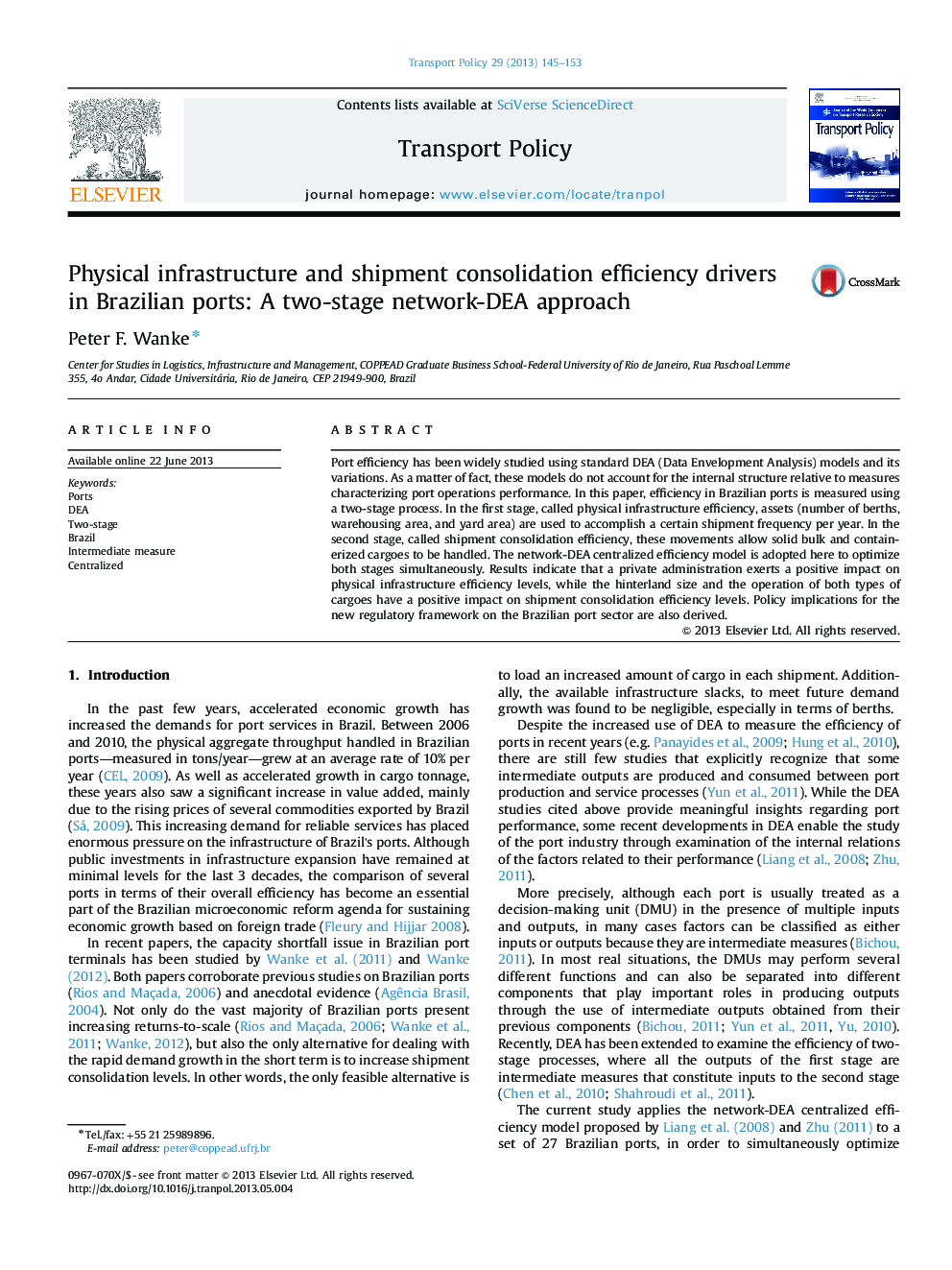| Article ID | Journal | Published Year | Pages | File Type |
|---|---|---|---|---|
| 1064948 | Transport Policy | 2013 | 9 Pages |
•In this paper, efficiency in Brazilian ports is measured using a two-stage DEA model.•Results indicate that efficiency drivers impact these productive stages differently.•Private administration exerts positive impact on physical infrastructure efficiency.•Hinterland size and cargo diversity have positive impact on consolidation efficiency.
Port efficiency has been widely studied using standard DEA (Data Envelopment Analysis) models and its variations. As a matter of fact, these models do not account for the internal structure relative to measures characterizing port operations performance. In this paper, efficiency in Brazilian ports is measured using a two-stage process. In the first stage, called physical infrastructure efficiency, assets (number of berths, warehousing area, and yard area) are used to accomplish a certain shipment frequency per year. In the second stage, called shipment consolidation efficiency, these movements allow solid bulk and containerized cargoes to be handled. The network-DEA centralized efficiency model is adopted here to optimize both stages simultaneously. Results indicate that a private administration exerts a positive impact on physical infrastructure efficiency levels, while the hinterland size and the operation of both types of cargoes have a positive impact on shipment consolidation efficiency levels. Policy implications for the new regulatory framework on the Brazilian port sector are also derived.
